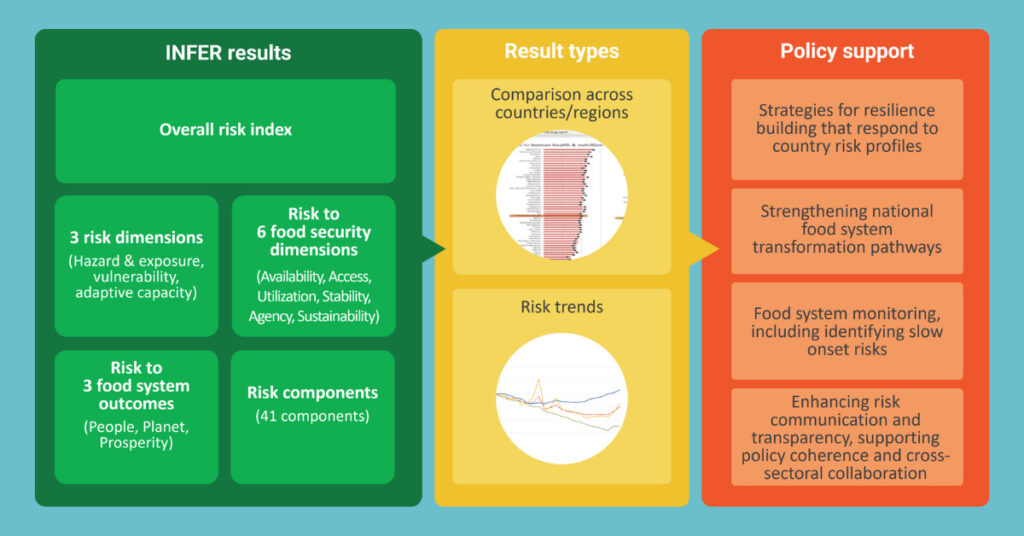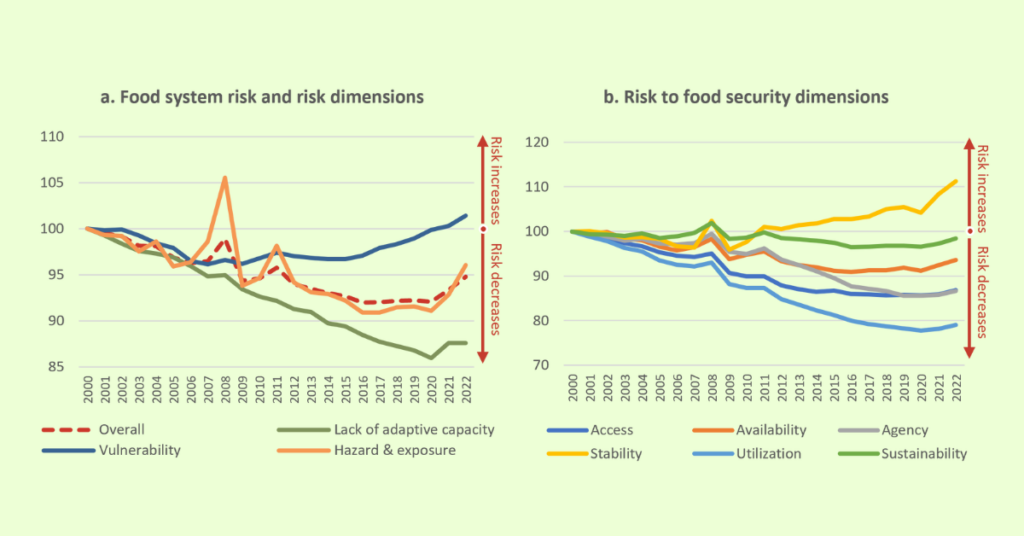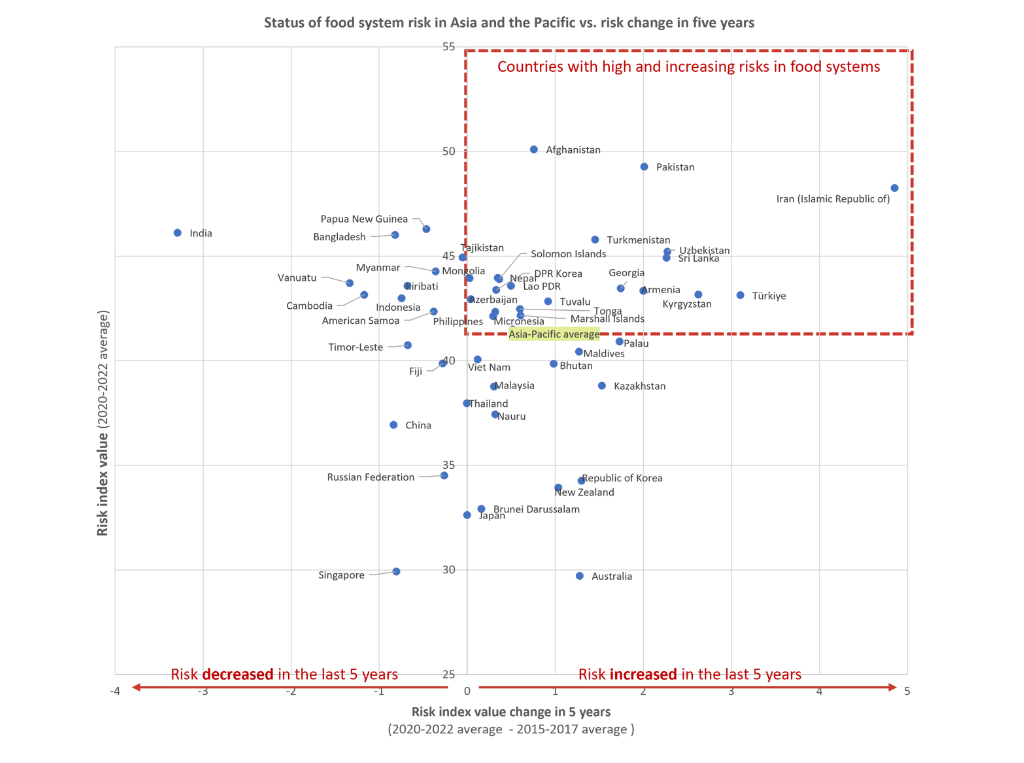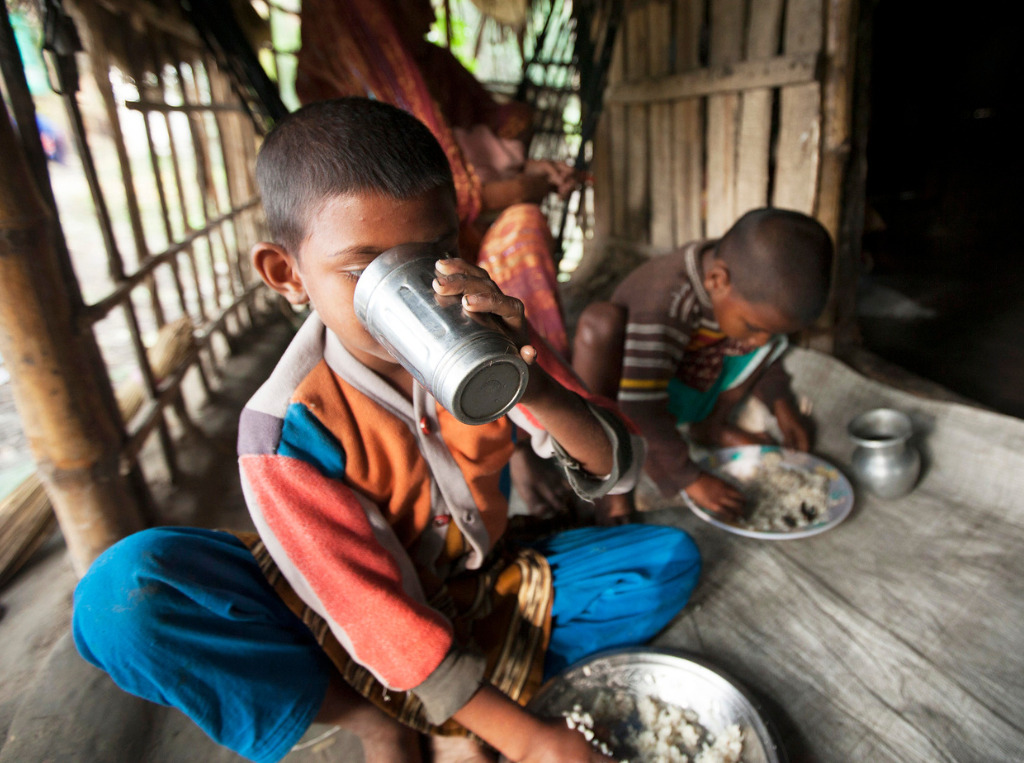APAC Countries Suffer from Increasing Food System Risks, According to a New Index
3 Mins Read
Food system risks are increasing in most Asia-Pacific countries despite higher production and better access to food, with market instability and slow climate improvements leaving many countries vulnerable to human health and nutrition insecurity, according to a new global index.
The UN’s Economic and Social Commission for Asia and the Pacific and the WFP Regional Bureau for Asia and the Pacific have created the Insights on Food System Risks (INFER) Framework, which is a data-driven approach to measuring multidimensional risks to food systems.
INFER uses 95 risk indicators to produce food system risk scores and profiles, which ESCAP says meets “an urgent need to understand how multidimensional threats manifest into food system risks”. The system utilises an up-to-date understanding of food systems with well-established concepts of risk based on three dimensions. These entail hazard and exposure, vulnerability, and a lack of adaptive capacity.
How INFER assesses risks

Here’s how it works: the index can tell what food systems are at risk, enabling the monitoring of these systems across human health and nutrition, planetary health and sustainability, and shared prosperity, aligning with the UN’s Sustainable Development Goals.
It can do so by providing insights into trends, characteristics and drivers of food system risks – including availability, access, utilisation, stability, agency and sustainability. This analysis makes INFER a useful tool for policymakers, development partners, researchers or stakeholders working in food systems transformation and food security.
Examples of policy support enabled by the tool include strategies for resilience building, in response to nations’ risk profiles, strengthening food system transformation pathways, food system monitoring (including identifying slow onset risks), and improving risk communication and transparency to support policy coherence and cross-sector collaboration.

Food risks are on the rise in APAC
The results from the index have been applied to 49 APAC countries, incorporating the 95 publicly available indicators. INFER has found that most countries in the region have experienced a rise in food system risks in the last five years, with the number particularly high in Afghanistan, Iran and Pakistan. Others like Australia, New Zealand and South Korea – which are relatively low-risk compared to the region’s average – are still seeing increases in food risks compared to five years ago.
Meanwhile, India is the Asian country with the highest decrease in food system risks in this period, but it still has a high percentage of risk attached to it. Across APAC, the vulnerability of these systems has continued to grow since the 2007-08 food energy price crisis.

While there has been progress in the region’s adaptive capacity and reduced exposure to hazards, the advent of Covid-19 reversed that trend, which ESCAP says increasingly painted “the picture of a perfect storm’ where risks increase across all three risk dimensions”.
Food security dimensions like food availability and health and safe utilisation have seen improvements, but there has been a considerable increase in stability-related risks, and a slow, only marginal improvement in terms of sustainability. This exacerbates the importance of risks beyond just producing enough food, as well as the crucial aspect of reducing risks of climate-change-related events, alongside vulnerabilities among the households and individuals most likely to be impacted by these.



